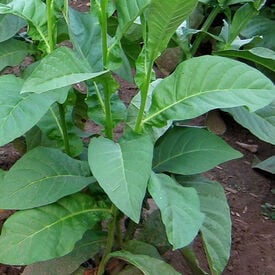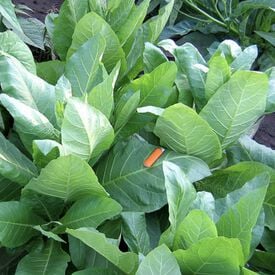Yumbo is a primitive strain of tobacco grown by the Yumbo tribe in the upper Amazon basin. It grows to 3' in height and matures in 45-50 days. The thick leaves are a dark green color averaging 9"-12" in width, and 14"-16" in length. The edges turn yellow when ripe and cured leaf has a nicotine content of 1.8%.
Sylvestris is native to Argentina and is often called Woodland Tobacco. A good producer of leaves, but today is best known for its large trumpet shaped white flowers. The leaves have a nicotine content averaging 3.9%. Flowers appear on top of a 3-4 foot high stalk in 45-50 days, rising above the leaves and often form a cascading white waterfall effect. Sylvestris is a striking addition to any flower garden.


